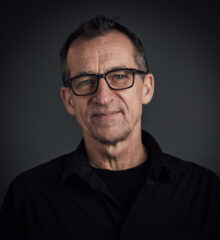
Meet the Masters: Wim Michiels, LITES Water Stage & Film Studios
Film StudiosThe Flemish Masters were centre-stage at TV Drama Vision, the international conference and marketplace for drama series at the Göteborg Film Festival in January 2024.
Speakers from across the sector reflected on the region’s rich creative talent, and outlined the contribution Flanders can make to international co-productions, both on-screen and behind the scenes.
Wim Michiels began by describing the experience that led him to design the LITES Water Stage & Film Studios. Working as an underwater director of photography, he frequently found himself waiting around on water stages with 50 other people while special effects were set up. “That was a problem, so I created a studio where all water effects are possible, on demand,” he said.

Made to measure
The LITES Water Stage & Film Studios complex, located in Vilvoorde, near Brussels, boasts the most advanced indoor water stage in the world. The 1,450m2 facility is capable for recreating water currents, rain, fog, wind, and of course waves, from paddling sizes up to a tsunami. And the studio’s capabilities evolve with each project.
We listen to what each producer wants to do, and if they want to film a boat that capsizes, then we build a platform that can tilt the set and capsize the boat.


This was the case for Estonia, a Finnish series about the wreck of a passenger ferry sailing between Stockholm and Tallinn in 1994. LITES already had a large platform that could lower a set into the water, but to tell the Estonia story it designed and built a new platform that was able to tilt up to 50 degrees above water and also sink under the water.
Since water shooting is a specialised business, Michiels works with each project that comes to him on the detailed breakdown on the schedule and budget. “Once that is on the table, we can discuss if this is viable for the producer, and then adapt according to their needs, for example making certain scenes simpler,” he said.
Under control
Of all the challenges involved in water shooting, the most important is training the actors . “You can have all the techniques and crew in the world, but if the actor cannot do what is needed in the water or under the water, then nothing happens,” Michiels said.
Many of the other challenges of water shooting can be controlled by working in the studio. Even in the warmest countries, water temperature on location tends to be cold, limiting shooting times, while at LITES the water is kept warm.
We work with water at 32°C, and that means you can work with your actors or their body doubles for a normal shooting day, over consecutive days, and that makes a difference.

LITES can also deliver consistent water clarity, from crystal clear to murky, as the script demands. “We can keep the water clear, even if the set is producing debris, and we can keep a dirty look for up to three consecutive weeks for story continuity,” Michiels said.

Contact
-
LITES Water stage & film studios
Wim Michiels
Discover more
Success stories
Read all success storiesMr. K: building a world in the studio
Co-production
Estonia: shooting the perfect storm
Film Studios
Diver's Dream Studio Comes True
Film Studios
Subscribe to our newsletter
Sign up for our newsletter and stay up to date with Screen Flanders news!